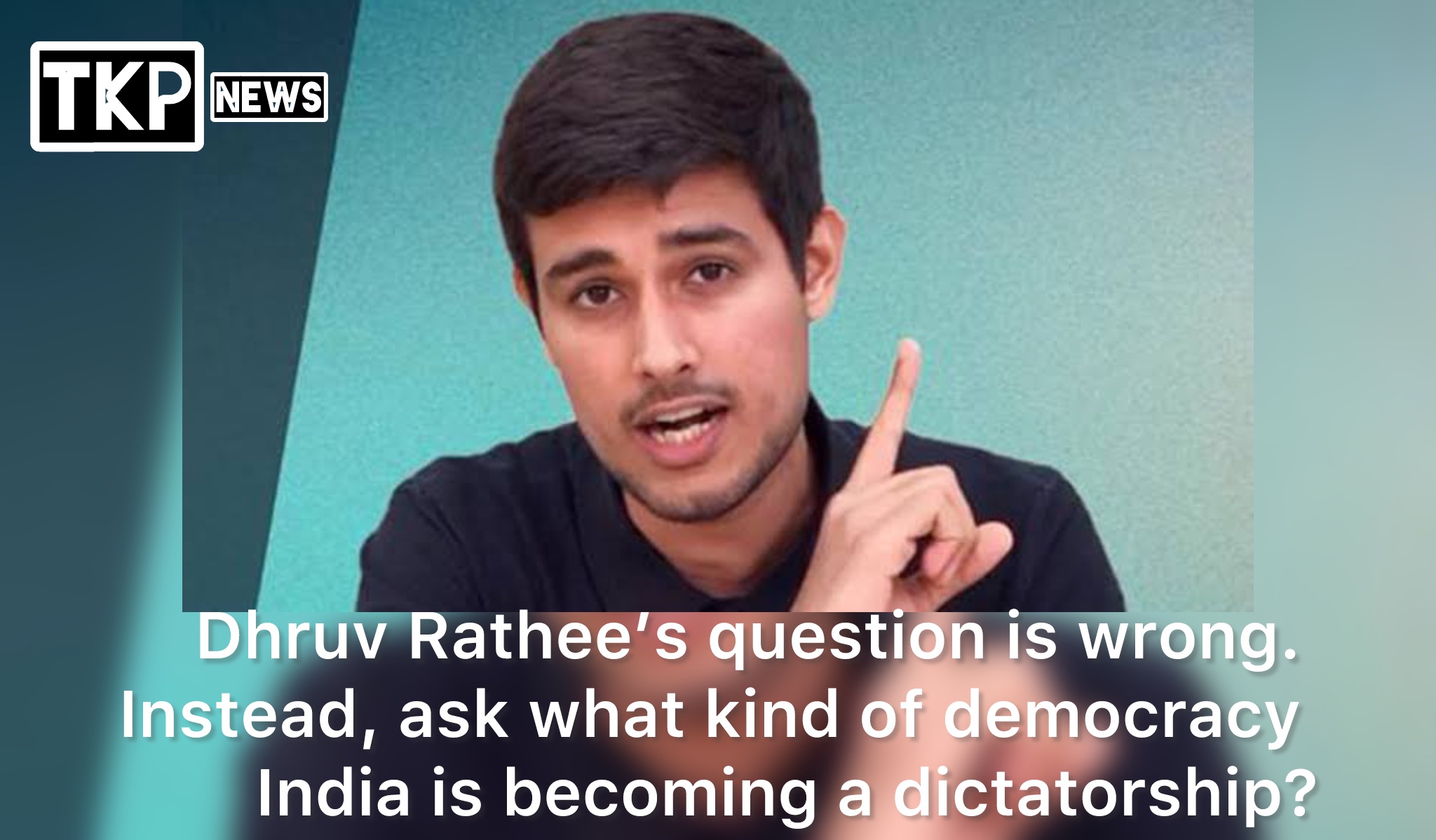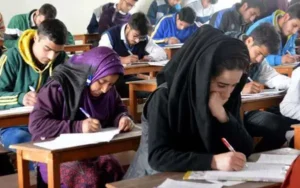Dhruv Rathee’s question is wrong. Instead, ask what kind of democracy India is becoming

Dhruv Rathee’s viral video asks if India is becoming a dictatorship. The problem is that it is an over-stylised description that lets the present govt off the hook.
India becoming a dictatorship? If a video with this title attracts 16 million views within a week, you can be sure of one thing: this is a good question worth asking in today’s India. We cannot be sure, though, that we already have a good answer here.
The interesting thing about Dhruv Rathee’s super-viral video is that it does not contain any exposé or any new fact that a regular follower of news headlines may not have known. It is a lucid recounting of everything that has worried Indians and well-wishers of Indian democracy: electoral bonds, the fraud in Chandigarh mayor’s elections, misuse of CBI/ED, decline in media freedom, the witch hunt of opposition leaders, toppling of opposition governments, and what have you. Yet, the video was powerful enough to force the BJP ecosystem to respond to it. The credibility of the presenter, the absence of any anti-Modi rhetoric, and the simplicity of the narrative allow the viewer to register the already known facts, connect them to one another, and see the obvious pattern. A simple pursuit of a good question can take you a long way, even in this allegedly post-truth age.
There is a danger in a good and provocative question. It tempts us to offer a simple yes or no answer. Though Rathee is cautious enough not to say so, the video can be interpreted to mean that India is indeed becoming a dictatorship. That’s how most critics of the current dispensation have seen it. The problem with this answer is not that ‘dictatorship’ is an overly harsh description of the current dispensation The real problem is that it is an over-stylised description that may actually let the present regime off the hook.
Non-democracy need not be ‘dictatorship’
The question — Is India becoming a dictatorship? — rightly invites us to measure India’s political system against the established norms of a democracy. It brings us face to face with the yawning and ever-growing gap between the norm and our present reality. But it also invites us to measure the present system against the received image of a classic dictatorship — martial law, censorship, suspension of elections and the Constitution. The lack of fit between Modi’s India and this image offers the apologists of the present regime a respite. This, in essence, is what his defenders are saying: since the system does not look like a classic dictatorship, it must be some form of democracy.
So, here is the foundational lesson in Political Science of the 21st Century: every non-democracy is not a dictatorship. In the age that we live in, non-democratic regimes don’t like — and don’t need — the garb of an old-fashioned dictatorship. So, the real question in our context is not whether India is a robust democracy anymore. The analytical question is: what kind of non-democracy is India becoming?
Authoritarian regimes — if we use this expression to cover all forms of non-democratic regimes — are a vast family of political species. Professor Juan Linz, the legendary scholar of comparative politics, offered an initial exploration of this universe in his classic Totalitarian and Authoritarian Regimes, originally published in 1975. The context has radically changed since then. The Cold War is over and so is the short period of liberal dominance that exerted democratising pressures on every government. Non-democracies are kosher now, as long as they don’t announce themselves as such. So, we have a range of hybrid regimes that mix some elements of democracy and autocracy. Hybridity is the norm in our times.
Concept of competitive authoritarianism
Competitive authoritarianism is one of these hybrid regimes and deserves special attention. In a series of publications, beginning with a seminal essay, ‘The Rise of Competitive Authoritarianism’ in the Journal of Democracy (2002), Steven Levitsky and Lucan A Way
have defined, classified, and explained this sub-specie of authoritarianism. They define it as a political system in which power holders do not abolish all formal democratic procedures, but “employ informal mechanisms of coercion and control, while maintaining the formal architecture of democracy”. The point of naming it such is to remember that it is not a poor form of democracy but an incomplete form of authoritarianism.
Here, “formal democratic institutions are widely viewed as the principal means of obtaining and exercising political authority. Incumbents violate those rules so often and to such an extent, however, that the regime fails to meet conventional minimum standards for democracy… Although elections are regularly held and are generally free of massive fraud, incumbents routinely abuse state resources, deny the opposition adequate media coverage, harass opposition candidates and their supporters, and in some cases manipulate electoral results.”
Before we turn to its relevance for India, let us note that within this specie, we can identify two sub-species. On the one hand, there are competitive authoritarian regimes that arose from incomplete “democratisation” of absolute autocracies of various kinds. These authoritarian regimes found it necessary to acquire some democratic credentials and institutional paraphernalia without incurring serious risk of losing their power. In 2019, this category included countries like Kyrgyzstan, Bolivia, Serbia, Nigeria, Kenya, and Zimbabwe, per Levitsky and Way in ‘The New Competitive Authoritarianism’, Journal of Democracy, 2020.
On the other hand, there are competitive authoritarian systems that come from the other end, where a seemingly robust democratic system of open and unpredictable political competition degenerated into a de-facto authoritarian system. Hungary, the Philippines, Turkey, and Venezuela are contemporary examples. The classic pattern is as follows, write Levitsky and Way: the rulers “command sizeable electoral majorities, and then deploy plebiscitarian or hypermajoritarian strategies to change the constitutional and electoral rules of the game so as to weaken opponents and lock in [their] own hold on power.” The routine methods include bribery, co-optation, and more subtle forms of persecution, such as the use of tax authorities, compliant judiciaries, and other state agencies to “legally” harass, persecute, or extort cooperative behavior from critics and opposition leaders.
India as competitive authoritarian system
The parallel with today’s India is unmistakable. No scholar of Indian democracy with any repute is now willing to defend the claim that India under Modi is a normal — even imperfect — democracy. There appears to be a consensus that while democracy in India was never perfect, things have fallen below the minimum threshold of what could qualify as democracy. This is duly reflected in the two well-known global indices of democracy. While these quantitative indices developed in the West are no objective measures, they offer a useful temporal comparison for the same country across years. Freedom House has downgraded India from “free” to “partly free”, while V-Dem classifies India as “electoral autocracy”, down from “electoral democracy”. Where the scholars differ is in their exact characterisation—illiberal, populist, majoritarian or ethnic democracy, or simply fascism.
This is where the concept of competitive authoritarianism helps us. It enables us to acknowledge the existence of a formal democratic apparatus that is not a complete farce and the reality of electoral competition that is not a complete fraud and does lead to occasional losses for the ruling party. At the same time, we can recognise the subversion of democratic institutions and the de-facto authoritarian rule in-between elections. That is why scholars like James Manor and Rahul Mukherji, along with activists like myself, have used this concept.
There is no standard format of competitive authoritarianism, and ours comes with special Indian characteristics. Given our obsession with elections and the centrality of elections to Indian democracy, it is not surprising that this is the only element of competition that survives in the current system, while legislature, judiciary, and media are no longer any meaningful sites of contestation. Democracy makes an episodic appearance in this system during the few weeks of elections.
One of these Indian features gives us a glimmer of hope. Unlike most other competitive authoritarian countries mentioned above, democracy has entered deep into the Indian public consciousness. In Shiv Visvanathan’s memorable phrase, India has “byhearted” democracy. Yes, they have a more pronounced yearning for a strong leader than ever before, but somehow they don’t see it clash with democracy. The Indian public has had an experience of Emergency, of losing and regaining democracy. And once people get a taste of democracy, they don’t surrender it. Not knowingly, not willingly.
Could that be the reason for the unprecedented popularity of Dhruv Rathee’s video and the unusual trepidation of the BJP ecosystem?
Yogendra Yadav is National Convener of the Bharat Jodo Abhiyan.
He tweets @_YogendraYadav. Views are personal.
(Edited by Asavari Singh)





